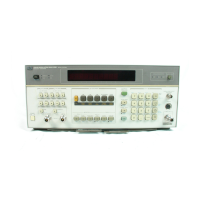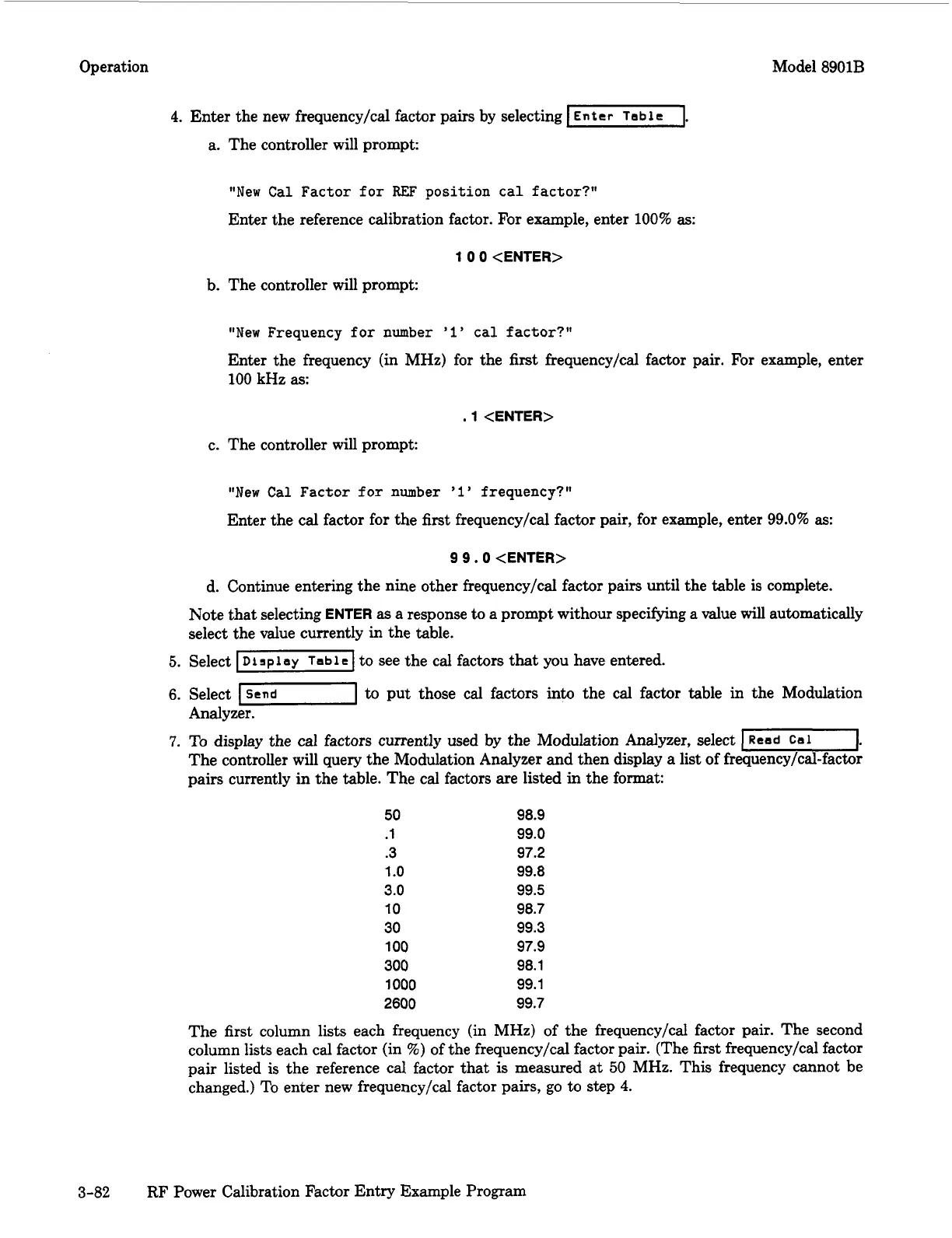Operation Model 8901B
4.
Enter the new frequency/cal factor pairs by selecting
I
Enter
To
b
1
e
1.
a. The controller will prompt:
"New
Cal
Factor
for
REF position cal
factor?"
Enter the reference calibration factor. For example, enter
100%
as:
1
0
0
<ENTER>
b. The controller will prompt:
"New Frequency
for
number
'
1
'
cal factor?"
Enter the frequency (in MHz) for the
first
frequency/cal factor pair. For example, enter
100
kHz
as:
.
1
<ENTER>
c. The controller will prompt:
"New Cal
Factor
for
number
'1'
frequency?"
Enter the cal factor for the
first
frequency/cal factor pair, for example, enter 99.0%
as:
9 9.0
<ENTER>
d. Continue entering the nine other frequency/cal factor pairs until the table
is
complete.
Note that selecting
ENTER
as
a response to a prompt withour specifying a value
will
automatically
select the value currently in the table.
Select
D
i
I
P
1
ay
Tab
1
e
I
to see the cal factors
that
you have entered.
Select
I
Send
Analyzer.
I
to put those cal factors into the cal factor table in the Modulation
To
display the cal factors currently used by the Modulation Analyzer, select
I
Read
Cal
I.
The controller will query the Modulation Analyzer and then display a list of frequency/cal-factor
pairs currently in the table. The cal factors are listed
in
the format
50
.1
-3
1
.o
3.0
10
30
100
300
1000
2600
98.9
99.0
97.2
99.8
99.5
98.7
99.3
97.9
98.1
99.1
99.7
The first column lists each frequency (in
MHz)
of the frequency/cal factor pair. The second
column lists each cal factor (in
%)
of the frequency/cal factor pair. (The first frequencyhal factor
pair listed is the reference cal factor that
is
measured at
50
MHz.
This frequency cannot be
changed.) To enter new frequency/cal factor pairs,
go
to
step
4.
3-82
RF
Power Calibration Factor Entry Example Program

